
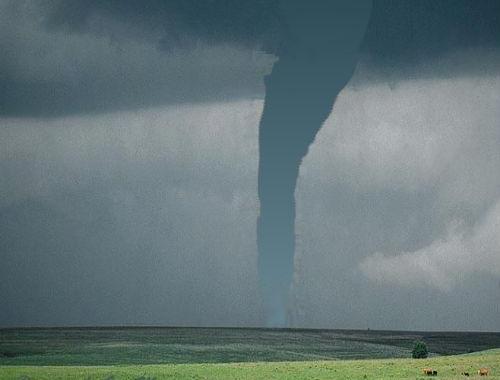
Left: Photograph of a funnel-shaped tornado. (Courtesy of G. Moore)
Right: Simulation of a tornado showing a bend funnel shape.
Previous research on tornadoes have focused either on the velocity, pressure and temperature profiles obtained by satellite images and tornado chasing, or on generating visually appealing images without taking into account the underlying physics. In this research, the tornado dynamics are modeled by the incompressible Navier-Stokes equations with appropriately defined boundary conditions which will result in rotating and uplifting flow movements as found in real tornadoes. To model the complex irregular tornado shapes, a particle system is incorporated with the model equation solutions.


Left: Photograph of a funnel-shaped tornado. (Courtesy of G. Moore)
Right: Simulation of a tornado showing a bend funnel shape.
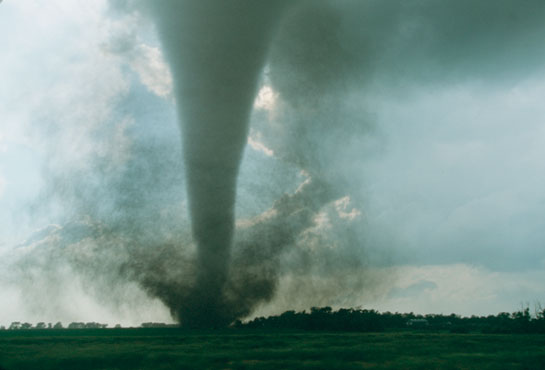

Left: Photograph of an arrow-shaped tornado due to swirling of debris
from the ground. (Courtesy of National Geographic)
Right: A simulated tornado with particles simulating the debris swirling effect.

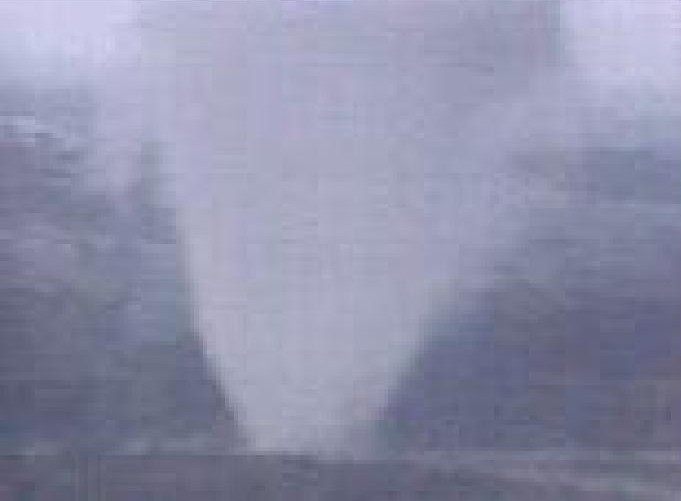
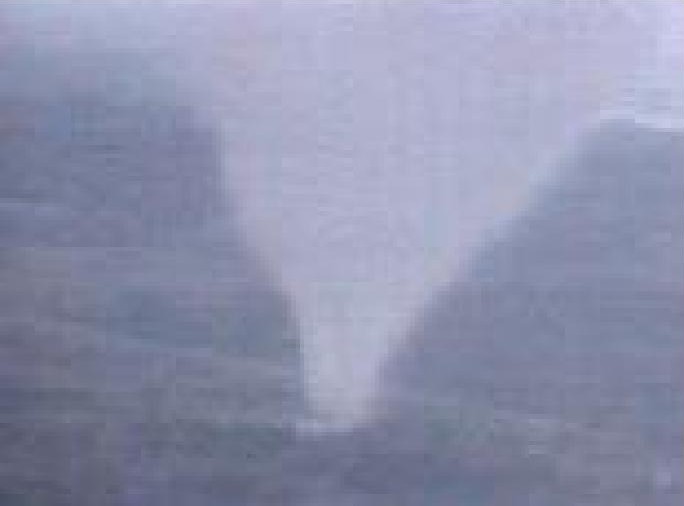
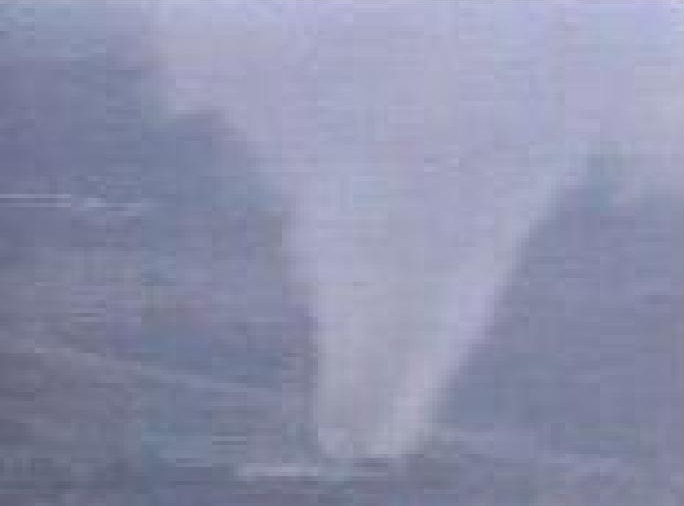

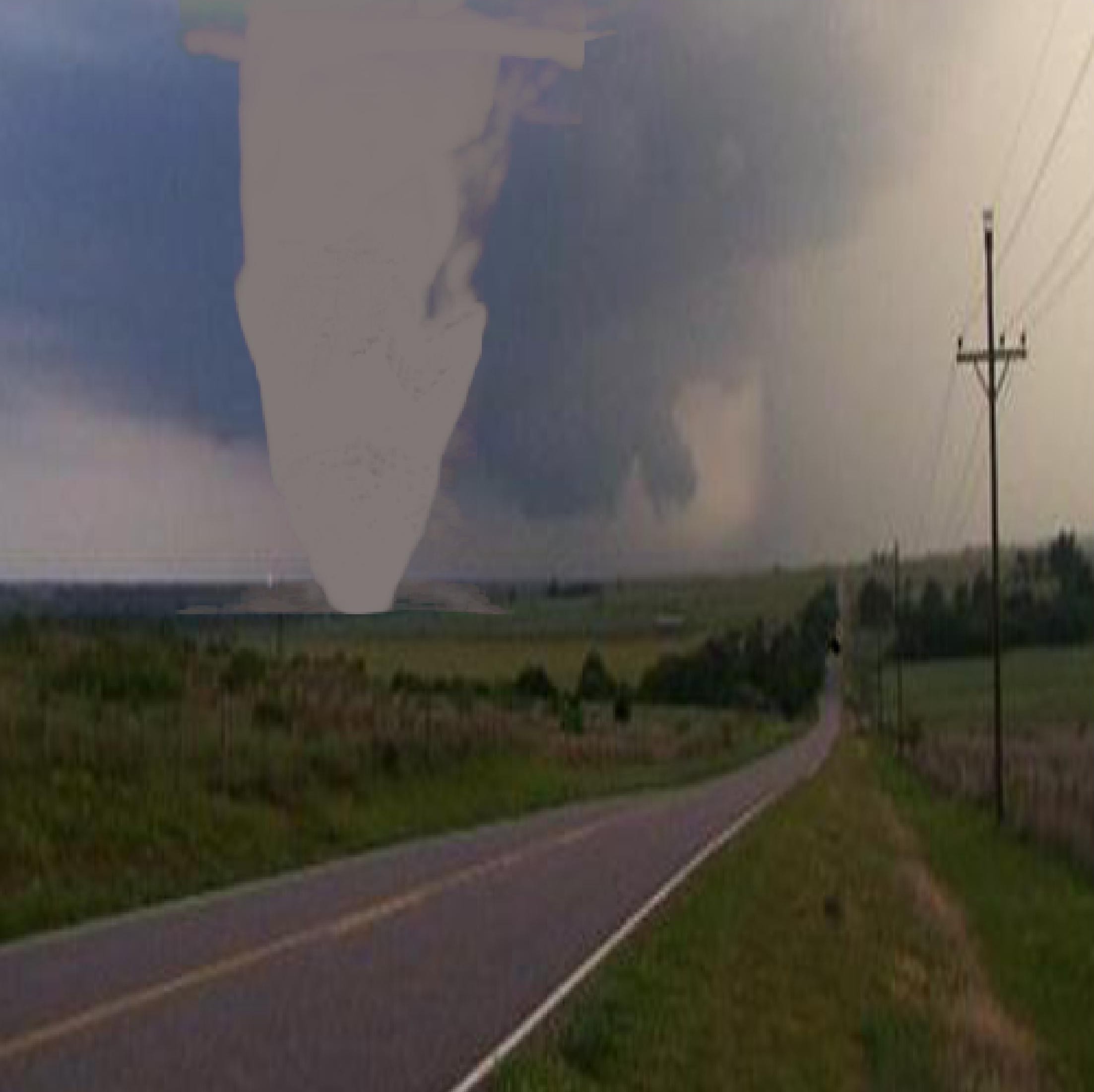
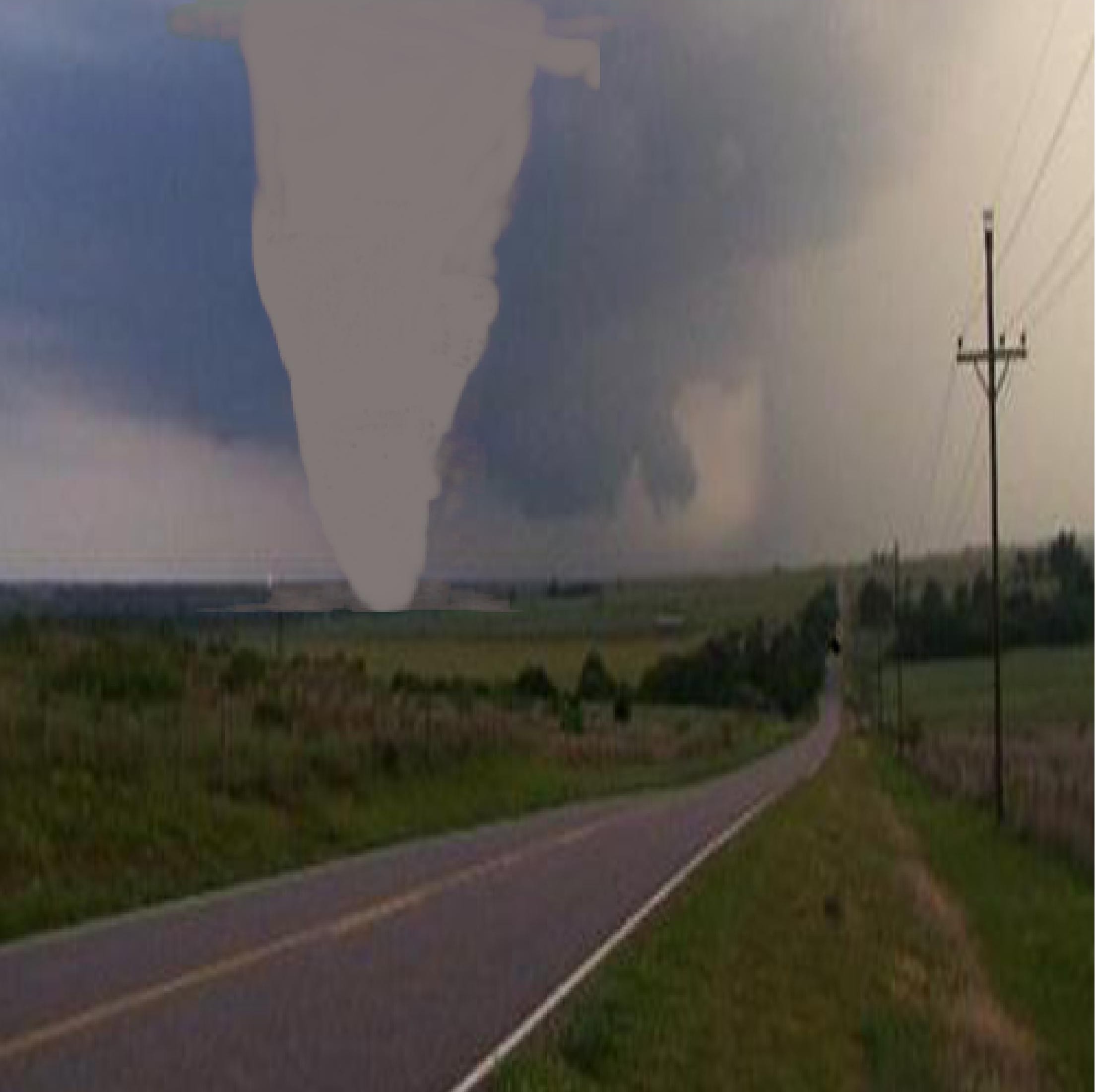
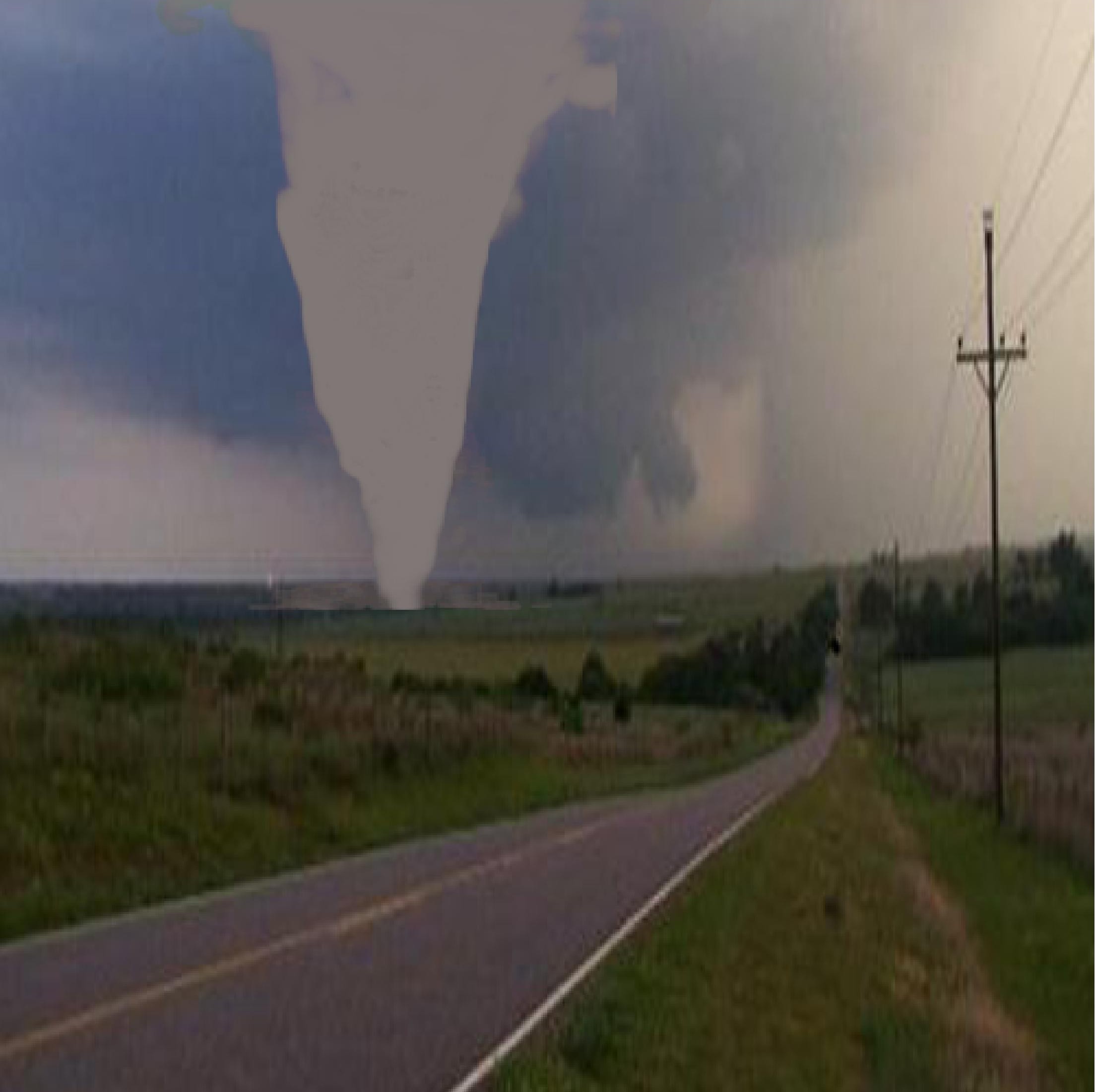

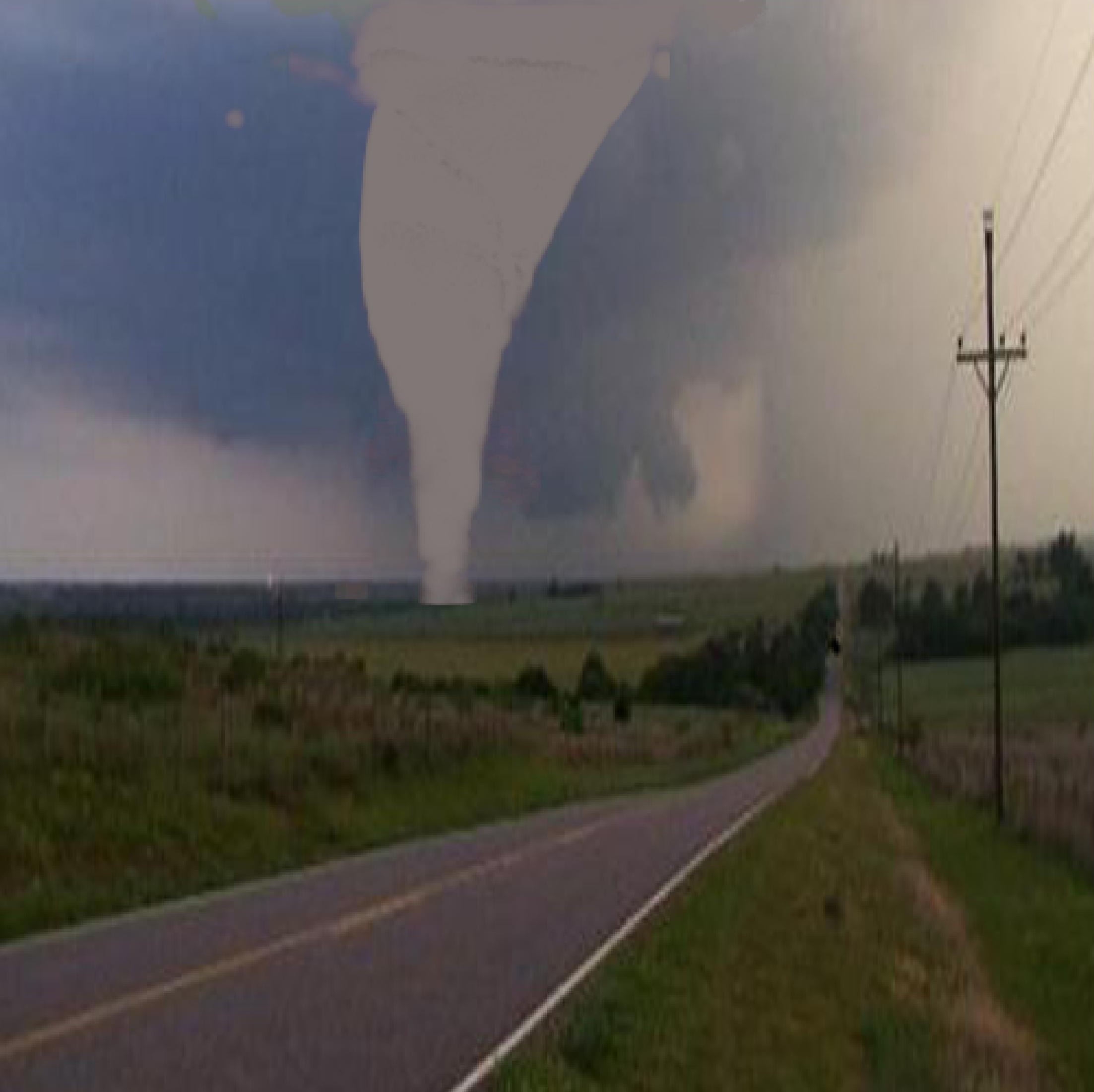
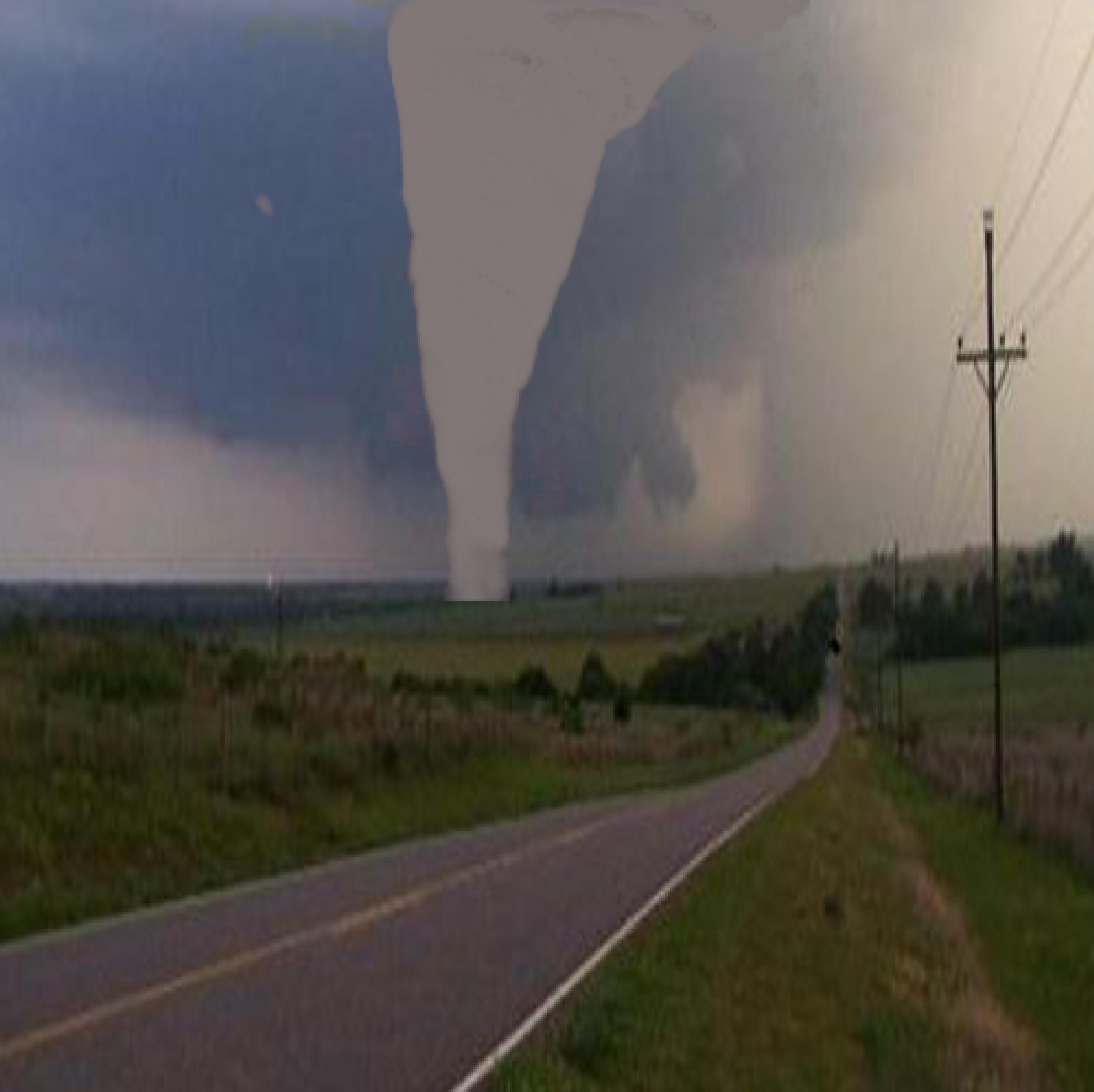
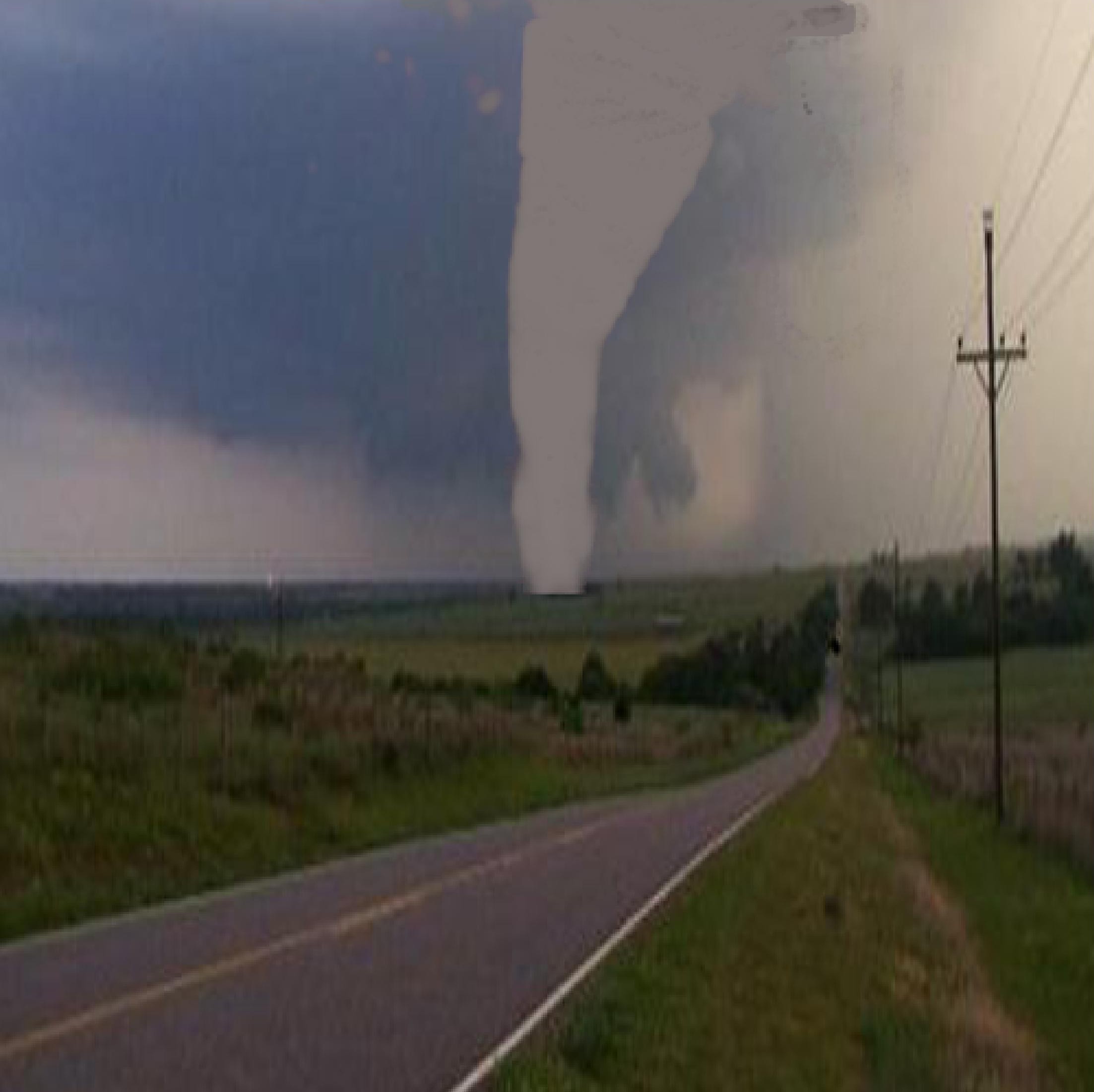
Frames from a simulation sequence showing the dynamic change of tornado
shape.